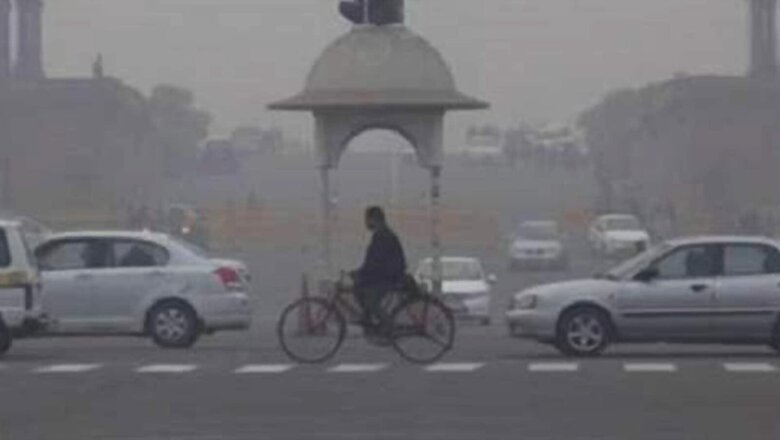
views
Ahead of Diwali, the Centre’s air quality forecast agency has warned the national capital that its AQI may slip into the ‘severe’ category with even a small increment in local emissions due to the bursting of firecrackers after the city enjoyed an agreeable October.
The higher the Air Quality Index (AQI) value, the greater the level of air pollution and the bigger the health concern. An AQI between zero and 50 is considered ‘good’, 51 and 100 ‘satisfactory’, 101 and 200 ‘moderate’, 201 and 300 ‘poor’, 301 and 400 ‘very poor’, and 401 and 500 ‘severe’.
“Even a smaller increment in the local additional emissions due to firecrackers is likely to have significant deterioration impact during November 4-6 and may put AQI in severe category,” says the System of Air Quality and Weather Forecasting and Research (SAFAR).
Delhi experienced its cleanest air since 2018 in October this year. Against the monthly average AQI of 268 reported three years ago, the national capital recorded the monthly average 173 AQI last month.
Further, the city also witnessed the AQI under the ‘good’ category for a day last month – for the first time in October since 2018.
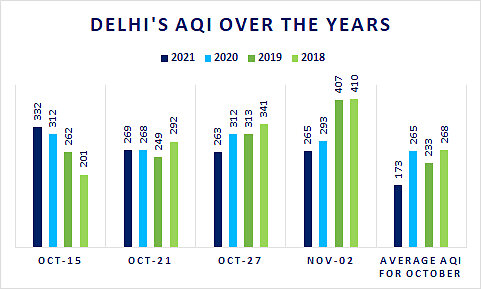
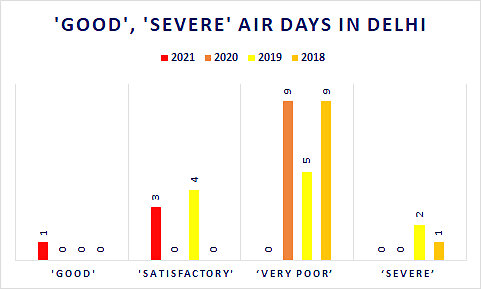
While it is believed that rains were the reason behind the better air the city witnessed in October, the authorities have warned that the stubble fire share in Delhi’s PM2.5 may reach a peak, about 40 per cent, on Friday, and the fire counts are assumed to be around 4,000. On Monday, the region reported 3,971 farm fires — the season’s highest single-day stubble burning count. In 2020, the share of stubble burning in Delhi’s pollution had peaked to more than 40 per cent on November 5.
Diwali, which is on Thursday, will also have an impact on Delhi’s air. Every year, the city has been witnessing air quality under ‘very poor’ and ‘severe’ categories after the festival. Last year, the AQI was 464 a day after Diwali, as per the data from Central Pollution Control Board.
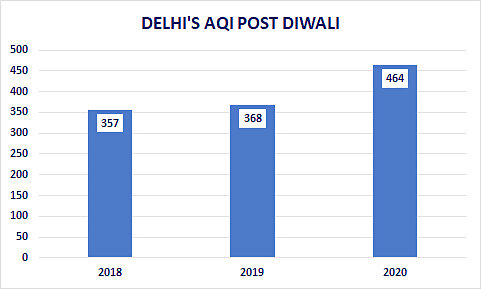
The air quality crisis of Delhi has become an annual issue for the past several years. However, even though the city’s air quality is still not up to the mark, it has shown improvement. The ‘good’, ‘satisfactory’ and ‘moderate’ days increased to 182 in 2019 in comparison to 108 in 2016, while the number of ‘poor’, ‘very poor’ and ‘severe’ reduced from 246 in 2016 to 183 in 2019, latest data from the union ministry of environment, forest and climate change shows.
According to the Economic Survey of Delhi 2020-21, the average levels of various pollutants, including PM10, and PM2.5, were lowest in 2020 since 2014, even though the parameters exceeded the prescribed standards.
In India, PM2.5 levels below 40 microgram per cubic meter and PM10 levels below 60 microgram per cubic meter are considered safe. However, in Delhi, the annual average of PM2.5 was 101 μg/m3 last year, dropping from 149 μg/m3 in 2014. Similarly, the annual city average of PM10 decreased from 324 μg/m3 in 2014 to 187 μg/m3 in 2020.
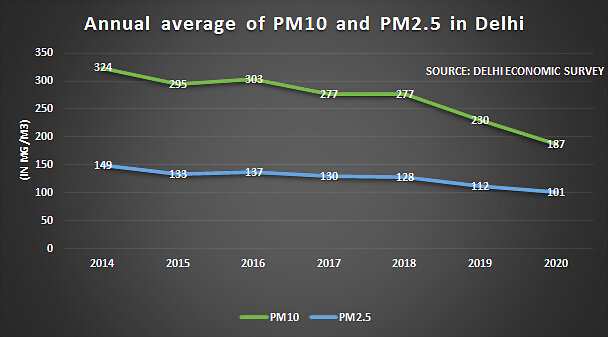
Delhi is a landlocked city. From industries to vehicles, urbanisation has its effects on the city’s air quality. Delhi’s environment is also highly influenced by different meteorological phenomena. While in summer, the air quality is swayed by dust storms from Rajasthan, in winter it is impacted by calm conditions and inversion as well as biomass burning in the national capital region (NCR).
Read all the Latest News , Breaking News and IPL 2022 Live Updates here.

















Comments
0 comment